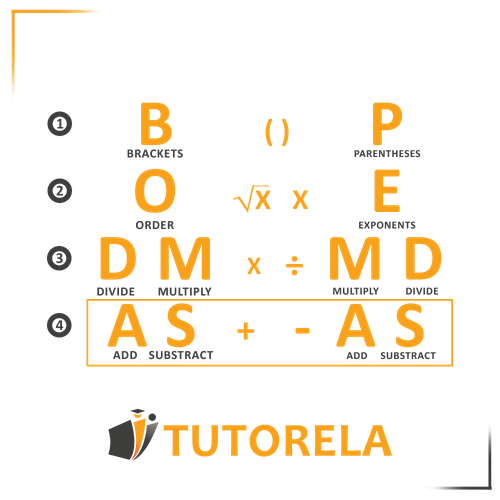Addition and subtraction are the third and final stage in the order of operations, immediately after multiplication and division and after opening the initial parentheses.
Addition and Subtraction Order of Operations Practice
Master addition and subtraction in PEMDAS with step-by-step practice problems. Learn to solve expressions with parentheses, multiplication, and division correctly.
- Apply PEMDAS rules correctly when addition and subtraction appear with other operations
- Solve expressions with parentheses by addressing brackets first, then operations in order
- Master left-to-right evaluation of addition and subtraction after multiplication and division
- Work through multi-step problems combining all four basic operations systematically
- Identify common mistakes in order of operations and avoid calculation errors
- Build confidence solving complex expressions step-by-step with proper operation sequencing
Understanding Addition and subtraction
Addition and subtraction in the order of operations
The first stage:
Opening parentheses and solving everything inside them.
If multiplication and division appear along with addition and subtraction, multiplication and division come first, followed by addition and subtraction from left to right.
Then we rewrite the expression without parentheses.
The second stage:
Multiplication and division in order, from left to right.
We will rewrite the new exercise after solving the multiplication and division.
The Third Stage:
Addition and subtraction in order.
We add and subtract from left to right.
Note - even within parentheses we will follow the correct order of operations - first multiplication and division, then addition and subtraction.

Practice Addition and subtraction
\(15 - 4 - 3 = \)
Examples with solutions for Addition and subtraction
Add first: .
Then, subtract: .
The correct answer is .
Answer:
First, add 5 and 9 to get 14.
Then, subtract 3 from 14 to get 11.
Answer:
First, add 7 and 5 to get 12.
Then, subtract 2 from 12 to get 10.
Answer:
First, subtract 4 from 15 to get 11.
Then, add 3 to 11 to get 14.
Answer:
First, subtract 6 from 8 to get 2.
Then, add 4 to 2 to get 6.
Answer: